Last week, dozens of former college stars were selected in the NBA draft. Those whose names were not called -- former standouts such as Malik Newman and Tre Duval -- latched onto summer league squads or secured two-way deals that will allow them to turn G-League opportunities into roster spots at the next level.
But now it's time to look ahead. Who are the top NBA prospects from each team in our Way-Too-Early Top 25?
1. Kentucky: Keldon Johnson, SF, Fr.
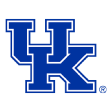
John Calipari's fleet of five-star recruits features Johnson, a 6-foot-6 wing who can explode through traffic or drive off screens. His size will help him play through contact, too.
With Reid Travis and PJ Washington working with Johnson on pick-and-roll situations, the projected top-15 pick in ESPN's 2019 mock draft could soar in his first and only season in Lexington.
2. Kansas: Quentin Grimes, SG, Fr.
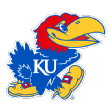
Coach Bill Self has seen a number of talented wings develop into NBA prospects: Andrew Wiggins, Josh Jackson, Kelly Oubre Jr. Frank Mason III and Devonte' Graham, among others. It's a long list.
According to Self, Grimes might have an edge on all of them. "I would say he's probably as complete a guard as we've ever had," Self told reporters last week.
The 6-5, 204-pound wing could crack the top 10 in next summer's NBA draft if he lives up to the hype.
3. Duke: R.J. Barrett, SF, Fr.

Duke's next freshman star made his mark last summer when he scored 38 points, grabbed 18 rebounds and tallied five assists in Canada's win over the United States in the FIBA Under-19 world championships.
John Calipari's American squad featured players such as recent first-round pick Kevin Huerter and five-star freshmen Cam Reddish (Barrett's teammate at Duke this season) and Immanuel Quickley.
Barrett, a 6-7 wing, is ESPN's top recruit in the 2018 class. He's also a capable finisher and versatile threat who could earn the top spot in next summer's NBA draft.
4. Gonzaga: Rui Hachimura, SF, Jr.

Gonzaga will reload again, as is the norm in Spokane, with the 6-8 Japanese American star. Hachimura averaged 11.6 points and 4.7 rebounds in 20.7 minutes per game last year, including 80 percent from the free throw line, and is prepared to increase his workload.
NBA executives are looking for multidimensional talents who can defend and score against multiple positions. Hachimura is all of that and more. He's one consistent jump shot (5-for-26 from the 3-point line) from making millions at the next level.
5. Tennessee: Admiral Schofield, SF, Sr.

Schofield can impress NBA scouts as an interchangeable forward with toughness and range. He entered this year's draft before withdrawing, and his return makes Tennessee a serious national title contender.
With the 6-5 combo forward on the floor, the Vols held opponents to an impressive 0.96 points per possession, according to HoopLens.com. He also made 40 percent of his 3-pointers and 76 percent of his free throws, numbers that could help him find a spot at the next level.
6. Nevada: Caleb Martin, SF, Sr.

Martin joined his twin brother, Cody Martin, and Jordan Caroline by withdrawing from the NBA draft. When they all enter again next season, Caleb Martin will have the best shot at making his NBA dreams come true.
Why? He's a sturdy, 6-7 wing who made 40 percent of his 3-pointers. He has the size and range for a league that craves both.
7. Virginia: De'Andre Hunter, SG, So.

A late-season hand injury cost Hunter an opportunity to play in the NCAA tournament and might be the only reason he didn't turn pro after his freshman season.
Hunter is one of the most alluring NBA prospects coach Tony Bennett has had. He was a solid youngster last season, but he should become a star and potential lottery pick in 2019.
He's a balanced, 6-8 talent who made 46 percent of his jump shots inside the arc, 38 percent of his 3-pointers, 61 percent of his shots at the rim and 76 percent of his free throws.
8. North Carolina: Nassir Little, SF, Fr.

ESPN's No. 6 recruit in the 2018 class won MVP honors at both the McDonald's All American Game and Jordan Brand Classic. Little is a 6-7 combo forward with a 7-1 wingspan who showcased his pro potential with dominant efforts against the nation's top recruits.
He's an explosive athlete, and, if he develops his midrange game, he could lead North Carolina back to the Final Four before becoming a top-5 pick.
9. Michigan State: Marcus Bingham, PF, Fr.

Coach Tom Izzo lost lottery picks in Jaren Jackson Jr. and Miles Bridges, but 6-11 Bingham is the most intriguing prospect on the 2018-19 roster. He's a stretch forward who can handle the ball and play in space. He uses his 7-4 wingspan to make plays around the rim. And he can alter and block shots away from it, too.
He might not look the part of a future NBA prospect this season, but one day, Bingham could join the multitude of Spartans in the NBA.
10. Villanova: Eric Paschall, PF, Sr.

Villanova is a blue blood program that just had four players drafted, including three in the first round. Coach Jay Wright will reload without those players and will rely on Paschall, who could become the next Wildcats star to sign an NBA contract.
Paschall is a 6-9 forward who helped Villanova win its second national title in three years. With Mikal Bridges, Jalen Brunson, Donte DiVincenzo and Omari Spellman in the NBA, Paschall (45 percent clip from the 3-point line in the NCAA tournament) could emerge as Wright's next surprising pro prospect.
11. Auburn: Austin Wiley, C, Jr.
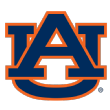
An invite to the NBA combine is a great sign for any prospect entertaining a career at the next level. Wiley earned his invitation even though he didn't play in 2017-18 because of an NCAA suspension tied to the FBI investigation of a widespread bribery scandal.
He's back at Auburn and eligible in 2018-19 and is already cracking the first round on some early mock draft boards. The 6-11 big man averaged 8.8 points and 1.3 blocks per game as a freshman in 2016-17. Coach Bruce Pearl recently said, however, that he's a "different" player now. His size will help his cause.
12. Kansas State: Xavier Sneed, SF, Jr.

Kansas State overcame injuries during its Elite Eight run, and Sneed was the team's most surprising playmaker.
The bouncy, 6-5 guard/forward piqued the interest of NBA scouts when he finished with 22 points and nine rebounds in a win over Kentucky in the Sweet 16. He also finished 3-for-7 from the 3-point line. If he shoots like that throughout the season, Sneed might solidify his NBA future.
13. West Virginia: Sagaba Konate, PF, Jr.

Coach Bob Huggins told ESPN that Konate impressed NBA execs after he entered the draft. They compared him to Clint Capela, the Houston Rockets' do-it-all forward who could earn a max contract this offseason thanks to his athleticism and his defensive capabilities.
Konate averaged 3.2 BPG and finished second in the nation with blocks on 15.6 percent of his possessions, according to KenPom.com. He's only 6-8, but the NBA is searching for mobile big men who can protect the rim -- and Konate fits that description.
14. Virginia Tech: Nickeil Alexander-Walker, SG, So.

As a freshman, Alexander-Walker finished fourth in scoring on an NCAA tournament team. But he's the sexiest NBA prospect on Virginia Tech's roster right now.
As a big 6-5 guard who averaged 10.7 PPG and made 39 percent of his 3-pointers and 52 percent of his shots inside the arc, he could become the first Hokie to crack the first round since Dell Curry, father of NBA superstar Stephen Curry.

His father, Manute Bol, played in an era when 7-footers were expected to stay around the rim, rebound and block shots. That's not Bol Bol. This is a 7-2 future lottery pick who can step out and hit 15-footers and 3-pointers. In Team USA's 89-76 loss to the World Team at the Nike Hoop Summit in April, he recorded 12 points, 14 rebounds and 6 blocks in the win.
Bol could lead Oregon to a Pac-12 title while erasing perceptions of 7-footers in the NBA.
16. Syracuse: Oshae Brissett, SF, So.

Brissett could become the next Syracuse player to represent the program at the next level. He averaged 14.9 PPG and 8.8 RPG last season, but he has to improve as a shooter (24 percent on jump shots) if he intends to fulfill that promise.
His length and burst are coveted tools, though. If he can add more range to his arsenal, he could solidify his NBA future.
17. Michigan: Charles Matthews, SG, Sr.
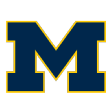
The Kentucky transfer teamed with first-round pick Mo Wagner to lead Michigan to its second national title game in five years. He withdrew from the draft and enters next season as the most significant player on a Wolverines team that's still capable of winning a Big Ten title despite the loss of Wagner.
The biggest concern for the 6-6 wing is whether he can he boost his 32 percent clip from the 3-point line.
18. Florida State: M.J. Walker, SG, So.
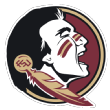
The former five-star recruit picked Florida State over Georgia Tech, Ohio State, UCLA and Virginia Tech. Next season, he could lead a Florida State team that's expected to compete for the ACC crown after last year's memorable Elite Eight run.
The 6-5 wing is a freakish athlete who averaged 7.0 PPG last season and could elevate his stock if he improves on his 34 percent mark from the 3-point line.
19. Loyola-Chicago: Cameron Krutwig, C, So.

At 6-9, 260 pounds, Cameron "Sweet Feet" Krutwig moves like a smaller man. He made 58 percent of his shots in the NCAA tournament and helped Loyola-Chicago and Sister Jean reach the Final Four.
His 17 points (6-for-11 shooting) and six rebounds against first-round pick Mo Wagner in the Final Four was proof of Krutwig's potential to grow into a pro prospect.
20. Clemson: Elijah Thomas, PF, Sr.

Thomas is a mobile 6-9 forward who can move down the floor with ease and compete in the paint with the country's top bigs.
He averaged 10.7 PPG, 8.1 RPG and 2.3 BPG last season, a strong year for a player who could help an NBA team that wants a shot-blocker with athleticism and agility. He's raw but promising.
21. LSU: Nazreon Reid, PF, Fr.

Reid is a ferocious big man who is not afraid to put the ball on the floor, and, at 6-10, 240 pounds, he has an NBA future. He's the most critical piece of Will Wade's incoming recruiting class, a special talent with the size and strength to make an immediate impact in college basketball and turn that dominant performance into a first-round slot in next summer's NBA draft.
22. Mississippi State: Aric Holman, PF, Sr.
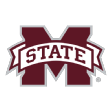
Many of today's NBA big men can stretch the floor with an outside shot. Holman, a 6-10, 225-pound forward, possesses that trait, which could help him turn another strong year in the SEC into an NBA deal.
He averaged 10.9 PPG, 6.7 RPG and 1.8 BPG, but his 44 percent clip from the 3-point line is his ticket to the next level.
23. TCU: Jaylen Fisher, PG, Sr.
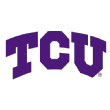
Fisher's knee injury derailed TCU's promising season. The Horned Frogs squeezed into the NCAA tournament after finishing 8-8 without him, highlighting his significance.
He's a tough, 6-2 guard who averaged 5.4 APG and made 84 percent of his free throws and 44 percent of his 3-point attempts. A healthy campaign could change his NBA prospects.
24. Butler: Kamar Baldwin, PG, Jr.

The loss of Kelan Martin is significant for Butler. But Baldwin's postseason efforts should make Butler fans excited for his return in 2018-19.
Against Arkansas, a team with athletic wings, the 6-1 guard finished with 24 points (2-for-3 from the 3-point line), 9 rebounds and 5 assists. He added 14 points, 4 rebounds and 3 assists in a second-round loss to Purdue.
He's a sturdy guard who hopes to increase his opportunities to make money in basketball with another standout year.
25. Purdue: Carsen Edwards, PG, Jr.

In a conversation with ESPN last year, Edwards said he wants to prove he's a versatile guard who can handle the ball, lead a team and diversify his offensive game.
This season's favorite to be named Big Ten Player of the Year, Edwards averaged 18.5 PPG and made 41 percent of his 3-pointers last season. He's only 6-2. But Fred VanVleet, a Sixth Man of the Year finalist last season, demonstrated the value of undersized yet reliable guards in today's NBA.
Edwards will get his chance at the next level, too.
